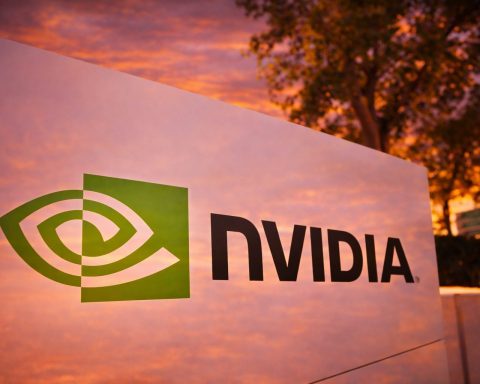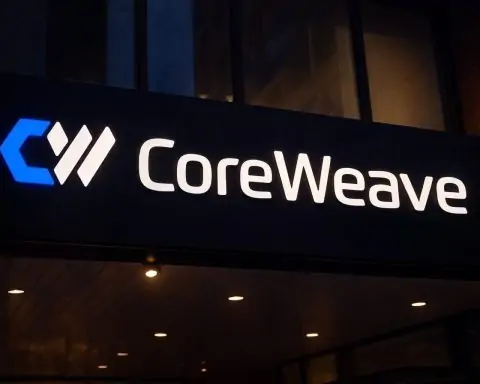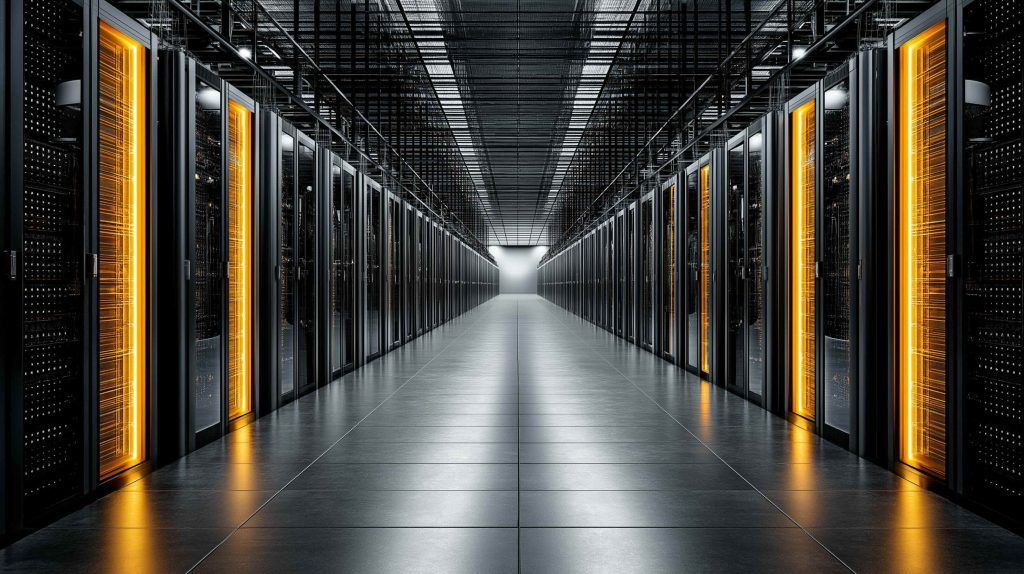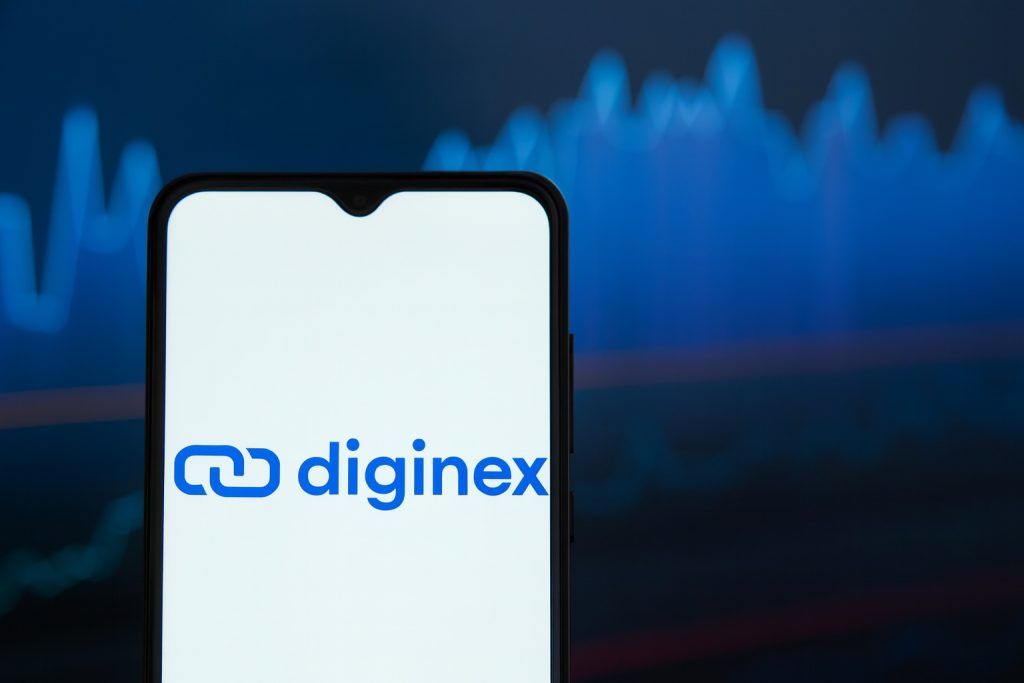- Company overview: Solaris Energy Infrastructure, Inc. (SEI) provides mobile equipment solutions for distributed power generation and manages raw materials used in oil and natural‑gas well completions. It evolved from a traditional oilfield‑services company into a provider of mobile power solutions for data centers, artificial‑intelligence (AI) computing and grid‑resiliency projects.
- Stock performance (YTD 2025): SEI shares rose from ~$28.78 at the start of 2025 to around $42.39 by 2 October 2025 – a roughly 47.3 % gain [1]. Despite sharp volatility in September (surges of 29 % and 21 % during mid‑month rallies [2] [3]), the stock remains up more than 35 % year‑to‑date.
- Analyst consensus: MarketBeat reports an average price target of $43.67 (range $32–$57) and an outperform/“buy” consensus rating from 12 analysts [4]. Key metrics include EPS $0.59, trailing P/E ratio 71.85, forward P/E 117.75, net margin 4.99 % and debt‑to‑equity 0.76 [5].
- Recent acquisitions: In August 2025 SEI acquired specialty power‑control company HVMVLV to internalize the design and distribution of complex power control systems, reinforcing its “power‑as‑a‑service” platform [6].
- Major joint venture: In April 2025 SEI finalized the Stateline joint venture, initially 500 MW and later expanded to 900 MW, to provide behind‑the‑meter power to an AI data‑center client. The seven‑year contract includes a $550 million senior secured term loan [7].
- Convertible debt: In May 2025 SEI issued $135 million of 4.75 % convertible senior notes due 2030 to finance new natural‑gas turbines and related equipment [8].
- Dividends: SEI paid quarterly dividends of $0.12 per share in 2025 (May, June and July announcements).
- Leadership: Founder Bill Zartler serves as chief executive. Former Texas Public Utility Commission chair Max Yzaguirre joined the board in January 2025 to bolster power‑sector expertise [9].
Recent News and Developments (August–October 2025)
Acquisition of HVMVLV (18 Aug 2025)
SEI announced the purchase of HVMVLV, a manufacturer of high‑, medium‑ and low‑voltage power‑control and distribution equipment. The company’s technology enables precise control of power flows to large loads such as data centers, hospitals and industrial facilities. SEI chief executive Bill Zartler said the deal “internalizes” design and manufacturing expertise and positions SEI to address new markets for behind‑the‑meter power solutions [10]. The new division brings engineering talent and broadens SEI’s offering from generator‑rental to integrated power‑as‑a‑service packages including distribution and voltage regulation.
Dual Listing on NYSE Texas (30 Jul 2025)
To raise its profile in its home state and attract local investors, SEI began a dual listing on NYSE Texas while maintaining its primary listing on the New York Stock Exchange. Zartler said listing in Houston supports business development given SEI’s growing presence in Texas. NYSE executive Chris Taylor welcomed the listing as a sign of growth in the state’s capital markets [11].
Second‑Quarter 2025 Results (23 Jul 2025)
SEI reported Q2 revenue of $149 million (up 18 % quarter‑over‑quarter), net income $24 million (0.30 per diluted share) and adjusted EBITDA of $61 million (29 % higher than Q1). It raised third‑quarter adjusted EBITDA guidance to $58–63 million and projected similar levels for Q4 [12]. The company closed a $155 million convertible notes issuance and a $550 million term loan for the Stateline joint venture and ended the quarter with $139 million in cash and $535 million in debt [13]. Zartler said SEI expanded its power fleet, accelerated its data‑center project and installed emissions‑control equipment during the quarter [14].
Insider Buying Spikes Share Price (Sept 2025)
In mid‑September the stock price rallied after CEO Bill Zartler purchased 10,000 shares and CFO Kyle Ramachandran bought 2,000 shares. Insider Monkey reported that the buying spree and investor enthusiasm propelled SEI shares 29.09 % higher between 9–16 Sept 2025, and the shares had gained more than 50 % over six months [15]. A week later, the stock extended its rally another 21.23 % after the insider purchases were disclosed [16].
Barclays Upgrades Price Target (Sept 2025)
Barclays analyst David Anderson reiterated a Buy rating and raised his price target from $39 to $44 following SEI’s strong second‑quarter results. According to an MSN/Insider Monkey report, Anderson called the quarter “impressive” and said distributed power solutions were the best way to participate in the broader equipment cycle driven by a “looming power shortage”msn.com. He argued that SEI would benefit from structural tailwinds for distributed energy infrastructure and a tight power market
msn.com.
Bear‑Case Theory Surfaces (Sept 2025)
A contrasting perspective appeared on 16 September when ValueInvestorsClub posted a bearish thesis, which was later summarized by Insider Monkey. The thesis argued that SEI’s stock had quadrupled following its pivot into AI‑focused mobile power after a $200 million acquisition in 2024, but that the business was commoditized and reliant on a single customer (reportedly Elon Musk’s xAI). The report claimed that xAI had removed most SEI turbines as new substations and Tesla battery storage were completed, potentially leaving the business with idle equipment [17]. It also highlighted concerns about management, disclosure practices and increased competition from Fortress and Atlas Energy [18]. The author argued that if power‑rental demand waned, SEI’s EBITDA could drop to $200 million by 2026, far below consensus $363 million, implying over 80 % downside [19].
Financial Performance and Market Position
Revenue and Earnings Trends
SEI has enjoyed rapid growth as it transitions from oilfield services to distributed power. In FY 2024 the company reported Q4 revenue of $96 million, net income $14 million and adjusted EBITDA $37 million [20]. FY 2024 revenue growth reflected strong demand for its mobile power fleet and increased adoption of its last‑mile logistics solutions. In Q1 2025, revenue grew sequentially to $126 million and adjusted EBITDA to $47 million, boosted by the Stateline joint venture and new power generation contracts [21].
By Q2 2025, revenue reached $149 million and adjusted EBITDA $61 million, underscoring continued momentum [22]. Management projected further growth in Q3 and Q4, supported by the completion of HVMVLV acquisition and the scale‑up of the power fleet. The company also increased its generating capacity by securing 330 MW of new capacity for the second half of 2026 and expected to operate 1,700 MW by mid‑2027 [23].
Balance Sheet and Debt
SEI finances its growth through a combination of debt and equity. At the end of Q2 2025, it had $139 million in cash and $535 million in consolidated debt (including the Stateline joint venture) [24]. The convertible senior notes offering in May 2025 added $135 million of 4.75 % debt due 2030 [25]. With a debt‑to‑equity ratio of 0.76 [26], SEI is more leveraged than typical utilities but still below many infrastructure peers. The company uses long‑term contracts to lock in revenue; the Stateline contract spans seven years [27], providing cash‑flow stability to service debt.
Dividend and Shareholder Returns
SEI pays a quarterly dividend of $0.12 per share, equating to an annualized yield around 1 % at October 2025 prices. Management has consistently declared dividends since early 2024, balancing shareholder returns with investments in growth.
Market Performance
MarketBeat data show SEI shares climbed 47.3 % during 2025, closing at approximately $42.39 on 2 October 2025 [28]. The stock has been volatile, surging in mid‑September due to insider buying and positive analyst commentary, then retreating after the bear thesis. Despite volatility, the consensus price target of $43.67 implies modest 3 % upside from current levels [29]. The price‑earnings valuation remains high at ~71.85 times trailing earnings, suggesting investors are paying a premium for growth [30].
Analyst Forecasts and Expert Opinions
Bullish Outlook
- Barclays (David Anderson) views SEI as a prime beneficiary of a looming shortage of dispatchable power. He argues that distributed power solutions are one of the best ways to participate in the equipment cycle and expects long‑term demand tailwinds
msn.com. After strong Q2 results, he raised his price target to $44
msn.com.
- Seeking Alpha analysts (Sept 2025) upgraded SEI to Buy, noting that growth in its Power Solutions segment offsets weakness in the logistics business. They believe demand from AI computing, electrification and grid resiliency will drive medium‑term returns and that SEI’s acquisitions and joint‑venture expansion position it for significant upside [31].
Neutral or Cautious
- MarketBeat’s consensus rating (3.17 out of 5) is slightly above “Buy,” with price targets ranging from $32 to $57, reflecting both optimism and caution [32].
Bearish Views
- ValueInvestorsClub’s bear case (summarized by Insider Monkey) argues that SEI’s power‑rental business is commoditized and reliant on a single customer (xAI). It suggests that the customer is reducing dependence on mobile generators as permanent substations and batteries come online, which could shrink SEI’s earnings to $200 million EBITDA by 2026 and send the share price back to $5–$10 [33]. This thesis questions management’s transparency and warns of rising competition [34].
Sector Context: Renewable and Distributed Energy Infrastructure in 2025
Demand Drivers
The rapid rise of artificial‑intelligence computing, electrification of industrial processes and the growth of data centers have created enormous demand for on‑site, dispatchable power. Many AI data centers require gigawatt‑scale capacity before local utilities can build permanent transmission lines. Mobile natural‑gas and dual‑fuel turbines like SEI’s offer a flexible solution. The U.S. grid is also constrained by aging transmission infrastructure and policy delays, increasing the attractiveness of behind‑the‑meter and microgrid solutions.
Policy Environment
U.S. federal policy favors investment in clean energy and grid resiliency. The Inflation Reduction Act (2022) extended tax credits for renewable energy and energy storage, which indirectly support SEI’s business by subsidizing customers’ investments in mobile and distributed power systems. However, natural‑gas‑fired mobile generators face questions about emissions; regulators may impose stricter limits on diesel and gas turbines, requiring SEI to integrate emissions‑control technology (already installed on its fleet [35]).
Competitive Landscape
SEI competes with peers such as Fortress Energy and Atlas Energy in mobile power rentals. These companies are entering the market due to anticipated power shortages and high AI demand. SEI differentiates itself through scale (aiming for 1.7 GW of fleet by 2027 [36]), integrated power‑control systems (via HVMVLV acquisition), and long‑term contracts. The bear thesis warns that the segment is commoditized, but SEI’s early move and joint ventures could provide a competitive edge.
Investor Sentiment
Investor sentiment around renewable infrastructure is mixed. Optimists highlight secular trends—AI, electrification, climate resilience—while skeptics worry about overcapacity once permanent infrastructure is built. SEI’s valuation implies high expectations; any sign of demand slowdown or contract cancellation (as the bear case suggests [37]) could lead to sharp sell‑offs. Nevertheless, the insider buying by SEI’s executives suggests management confidence [38].
Conclusion
Solaris Energy Infrastructure is a relatively young player transitioning from oilfield services into distributed power generation for the AI age. Its financial performance has improved dramatically through 2024–2025, with revenues nearly tripling and profitability increasing, supported by long‑term contracts and aggressive fleet expansion. The market rewarded this growth with a 47 % share‑price gain in 2025 [39] and a consensus “buy” rating [40].
However, SEI is not without risk. Its growth depends on large customers like xAI and data‑center developers, and competition is increasing. A bearish thesis warns that reliance on a single customer and commoditized equipment could cause earnings to tumble, sending the stock plummeting [41]. The company’s high valuation and significant leverage amplify these risks.
Investors weighing SEI should consider both the bullish narrative—massive demand for portable power and SEI’s leading position—and the potential pitfalls of customer concentration and temporary demand spikes. With the renewable‑energy infrastructure sector in flux, SEI’s success will hinge on its ability to secure diversified long‑term contracts, manage debt, and innovate in cleaner, scalable power solutions.
In summary, Solaris Energy Infrastructure, Inc. (SEI) emerged in 2025 as a notable player in the fast-growing distributed power market. The company’s revenues and adjusted EBITDA surged through sequential quarters, buoyed by long-term data center contracts and acquisitions that broadened its capability from generator rentals to integrated “power-as-a-service” solutions [42]. This aggressive expansion, coupled with insider buying and bullish analyst upgrades, propelled SEI’s stock roughly 47 % higher year-to-date, with market consensus remaining cautiously optimistic [43].
Yet the report underscores significant risks. A bearish thesis warns of overreliance on a single AI-client and suggests commoditization could slash EBITDA and crater the share price [44]. The broader renewable infrastructure landscape is mixed: while AI-driven demand and grid strain create opportunities, intensifying competition and regulatory scrutiny pose threats. Investors should weigh these opposing forces carefully, recognizing that SEI’s future hinges on diversifying its customer base, securing long-term contracts, and effectively managing its debt load.
References
1. www.marketbeat.com, 2. www.insidermonkey.com, 3. www.insidermonkey.com, 4. www.marketbeat.com, 5. www.marketbeat.com, 6. ir.solaris-energy.com, 7. ir.solaris-energy.com, 8. ir.solaris-energy.com, 9. ir.solaris-energy.com, 10. ir.solaris-energy.com, 11. ir.solaris-energy.com, 12. ir.solaris-energy.com, 13. ir.solaris-energy.com, 14. ir.solaris-energy.com, 15. www.insidermonkey.com, 16. www.insidermonkey.com, 17. www.insidermonkey.com, 18. www.insidermonkey.com, 19. www.insidermonkey.com, 20. ir.solaris-energy.com, 21. ir.solaris-energy.com, 22. ir.solaris-energy.com, 23. ir.solaris-energy.com, 24. ir.solaris-energy.com, 25. ir.solaris-energy.com, 26. www.marketbeat.com, 27. ir.solaris-energy.com, 28. www.marketbeat.com, 29. www.marketbeat.com, 30. www.marketbeat.com, 31. seekingalpha.com, 32. www.marketbeat.com, 33. www.insidermonkey.com, 34. www.insidermonkey.com, 35. ir.solaris-energy.com, 36. ir.solaris-energy.com, 37. www.insidermonkey.com, 38. www.insidermonkey.com, 39. www.marketbeat.com, 40. www.marketbeat.com, 41. www.insidermonkey.com, 42. ir.solaris-energy.com, 43. www.marketbeat.com, 44. www.insidermonkey.com










